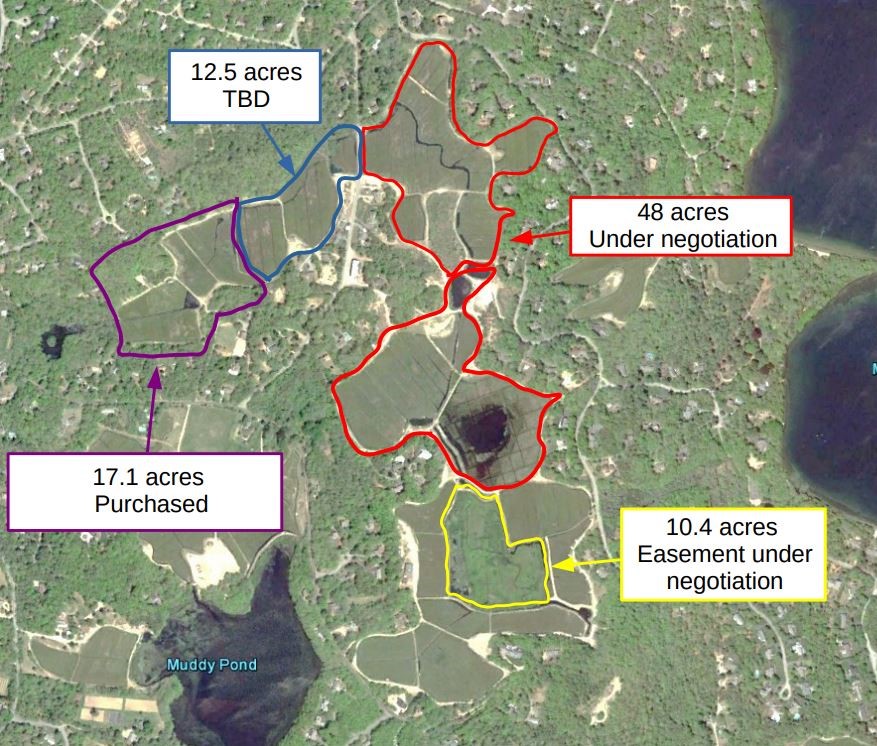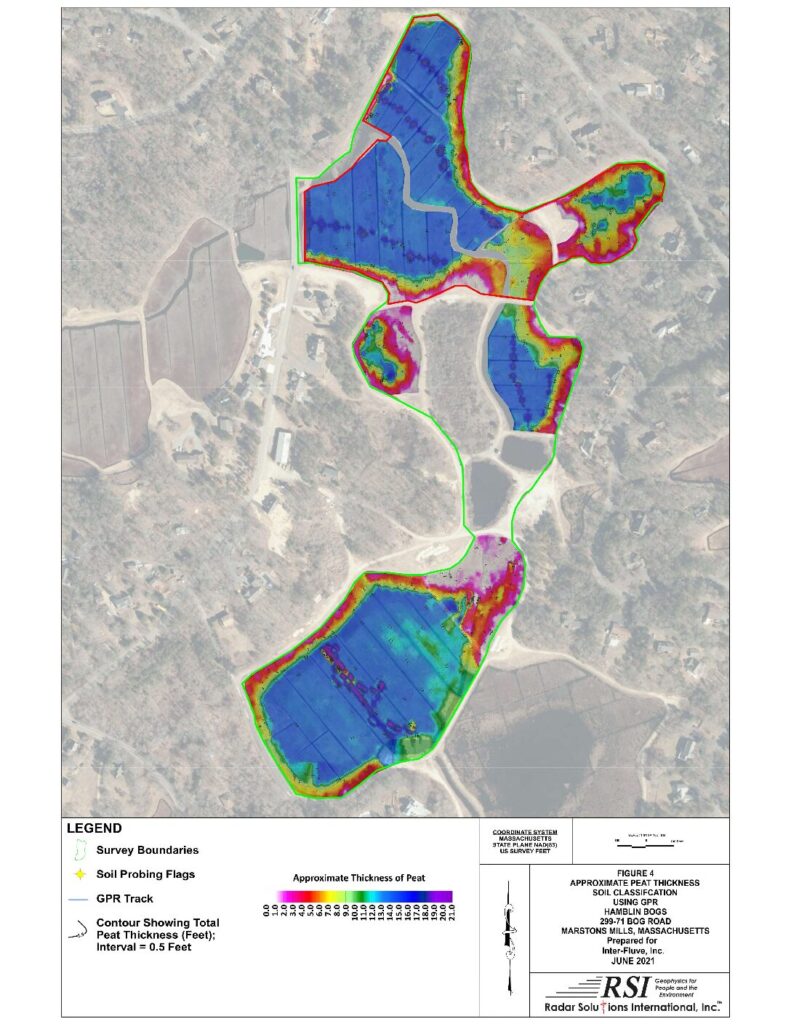
MARSTONS MILLS CRANBERRY BOG RESTORATION PROJECT
BCWC is working to restore 55 acres of cranberry bogs to natural freshwater wetlands. This restoration would entail filling drainage ditches, grading the bog surface, removing water control structures, reconstructing stream channels, loosening the sand layer, and moving sediment. The goals of this restoration project include:
- Attenuate nitrogen and reduce the nitrogen flow downriver
- Improve water quality in the Three Bays Estuary
- Habitat restoration
- Public recreation and education opportunities

In 2022, BCWC made its first land acquisition for the Marstons Mills Cranberry Bog Restoration Project! BCWC purchased the section highlighted in purple and is in negotiations to purchase the acreage in red and to obtain a conservation easement on the acreage in yellow.

The Marstons Mills cranberry bog system is home to a significant amount of groundwater upwelling, where water is constantly being transported to the surface. The headwaters of the Marstons Mills River are formed from the continual upwelling of groundwater in these bogs.

Groundwater flowing to the bog’s surface is loaded with nutrients from the septic systems of hundreds of homes surrounding the bogs. This water is so nutrient laden with nitrogen that the cranberry farmer has not needed to use fertilizer on the bogs for over a decade. The subwatershed at the top of the bog system also contributes nitrogen from inefficient residential and commercial septic systems. Once water enters the bogs, it flows into the Marstons Mills River. The river acts like a highway carrying nitrogen-rich water into the Three Bays estuary in about 5 hours. Nutrients traveling through the bogs make up approximately 40% of the excess nitrogen load flowing into the Three Bays estuary.
